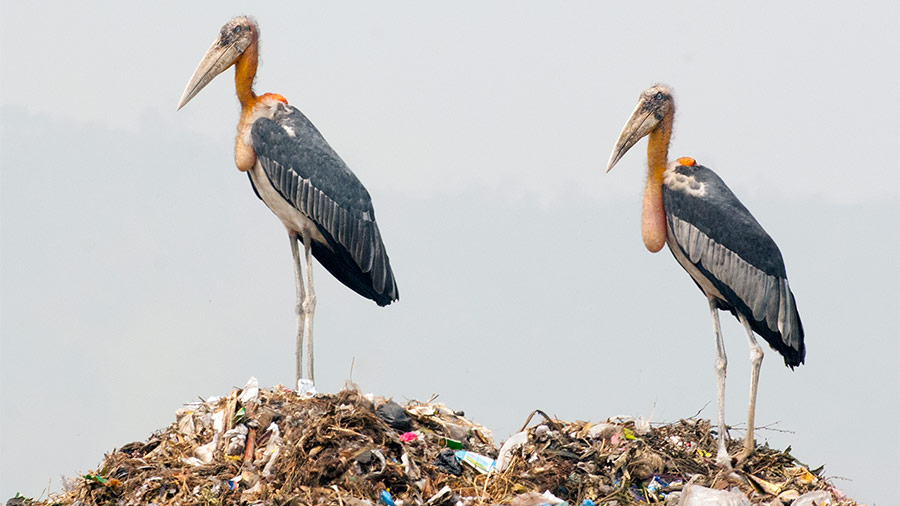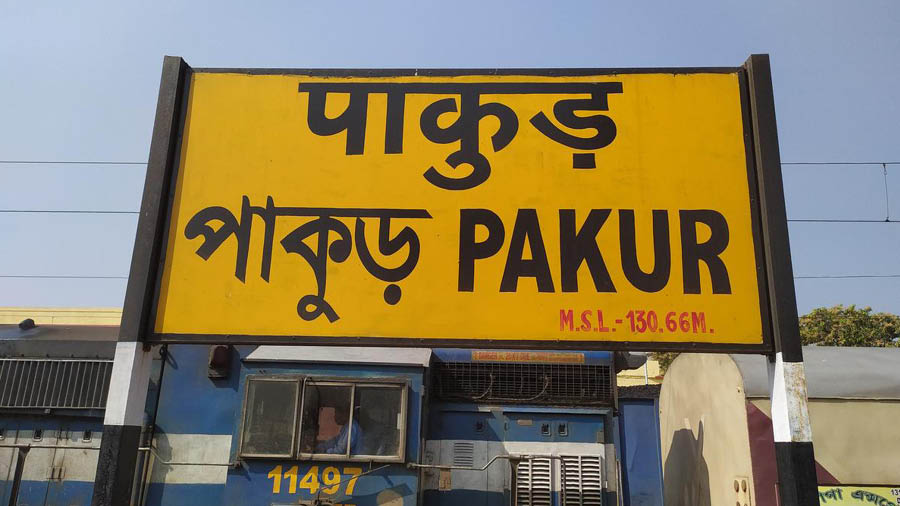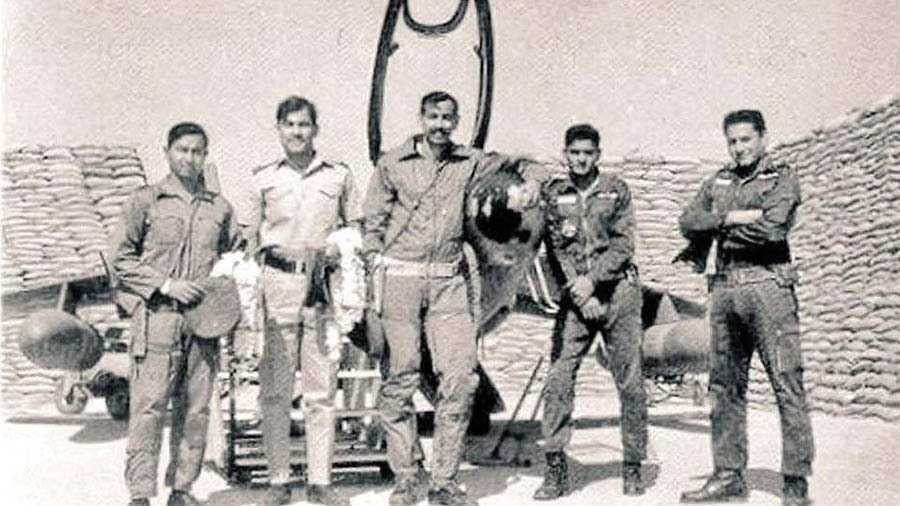It is Calcutta in the early 1760s. After racking up victories at Chandernagore over the French (March, 1757), at Plassey over Nawab of Bengal Siraj-ud-Daullah (June, 1757) and at Chinsurah over the Dutch (November, 1759), the British East India Company are now the unchallenged masters of Bengal. Calcutta, only half a century ago a collection of small villages, is now on its way to become the number two city of the empire. It witnesses the arrival of not only Europeans, but merchants, traders and fortune seekers from as distant lands like Russia, Syria, Asia-Minor and so on.
However, as the population grows, other challenges surface. This was many years before Raja Ram Mohan Roy’s social crusade. The practice of sati-daha was very much prevalent among higher-class Hindus. The sides of the river and its channels would be lined with smouldering fires and half-burnt human remains. Moreover, the poorer sections of the society often left the dead bodies by the side of the river or floated it in the water — generally due to a lack of funds. All this contributed to a most ghastly scenario. Rotting remains on the river led to proliferation of flies and other insects. The stench was unbearable. And the remains attracted jackals, which further aggravated the situation.
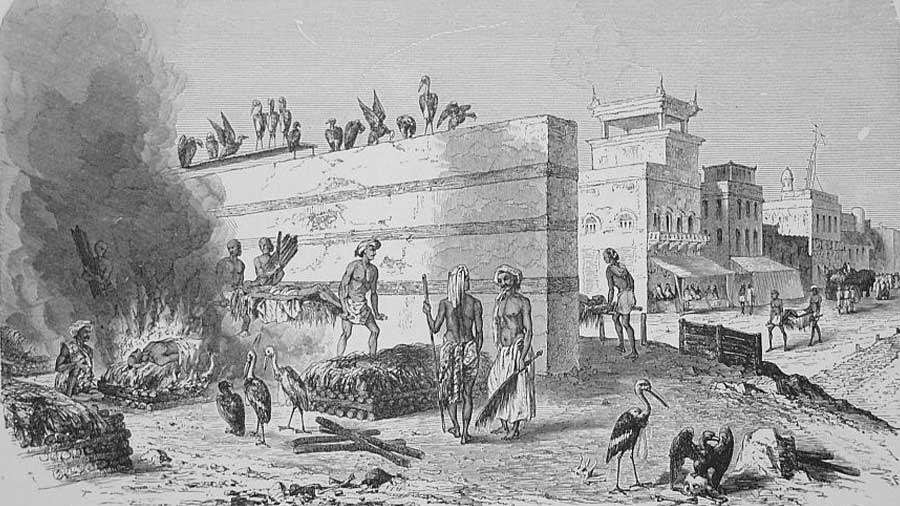
Engraving showing adjutants at the cremation ghat in Calcutta Wikimedia Commons
In 1742, construction started for the Mahratta (Maratha) Ditch at the northern outskirts of the city to ward off attacks from the dreaded Maratha raiders, who used to wreak havoc on Bengal. However, the feared attack on the city never materialised and the construction was abandoned mid-way. The incomplete ditch would in the coming years become a dumping ground of all kinds of garbage and waste. Particularly galling was the practice by the locals of dumping dead animals (mainly cattle) in the ditch.
Very soon, the dirty and unhygienic conditions started taking a deadly toll. Deaths from infectious diseases like cholera was very high, more so among the residents of the white town. Although a municipal corporation had been set up in September, 1726, this acted more as a Mayoral court, mainly handling judicial affairs. A visit to the South Park Street Cemetery will tell you how short the average life span was in that period among the city’s foreign population. The locals didn't fare much better either. In this dark and depressing scenario, emerged an unlikely savior.
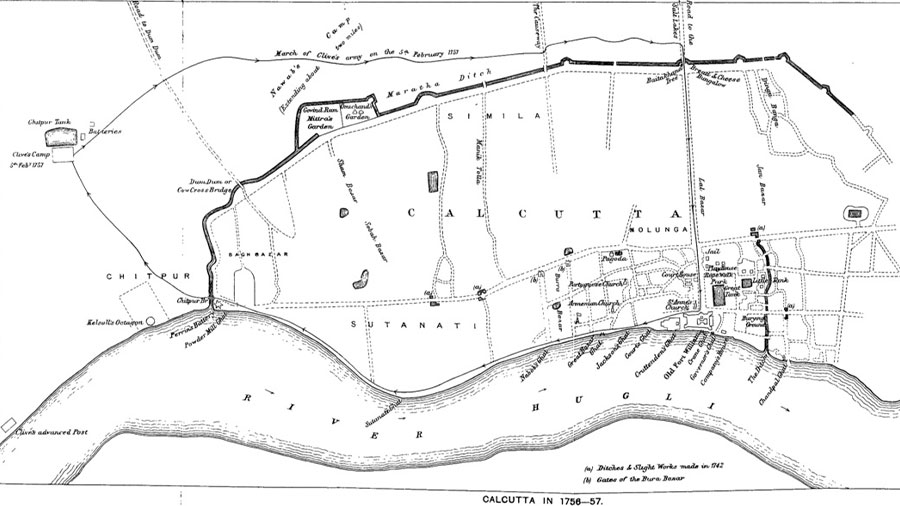
A map of the Maratha Ditch Wikimedia Commons
The hargila (bone swallower) bird — a member of the stork family. A natural scavenger, this giant bird used to be as ubiquitous as crows are today in the city. They took upon the responsibility of cleaning up the city, especially the river and its banks. Voracious scavengers, the birds used to clean up human remains in little time, not allowing flies and insects to pester. Moreover, jackals were terrified of these giants, and the presence of the birds reduced the nuisance of jackals dragging human carcasses here and there. In the latter decades of the 18th century, it was a common sight to find a body floating along the river with a hargila bird seated and feasting on it. (Such a scene finds a mention in Satyajit Ray’s Feluda novel Gorosthaney Sabdhan.)
Besides cleaning up garbage and human remains, another part of the stork’s diet came as a great blessing for Calcutta’s residents — these birds were keen hunters of snakes. Other than diseases, snake bites were the biggest cause of death in these lands back then. Moreover, since it was a practice to float the corpse of a person killed by snakebite in the river, the reduction in the number of deadly reptiles also had a beneficial impact on the river’s water quality.
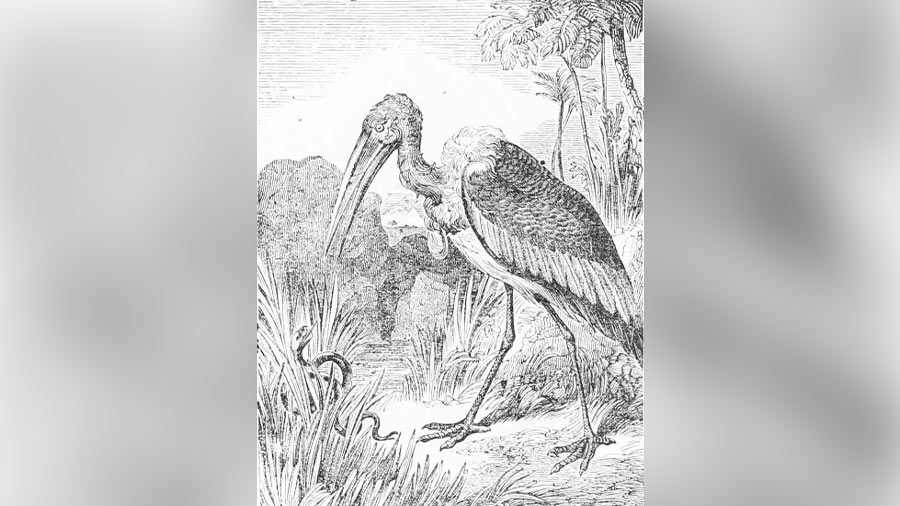
An 1855 illustration depicting the stork hunting a snake Wikimedia Commons
Such was the gratefulness of Calcutta's colonial masters, that these birds were officially named as ‘greater adjutants’ — honouring their unlikely allies with the term for British military rank of a senior captain or major. In 1896, when the coat of arms for Calcutta city’s government machinery was to be decided, the choice was a no-brainer. The coat of arms had two storks facing each other — holding a snake in their mouths with the royal crown placed in between.
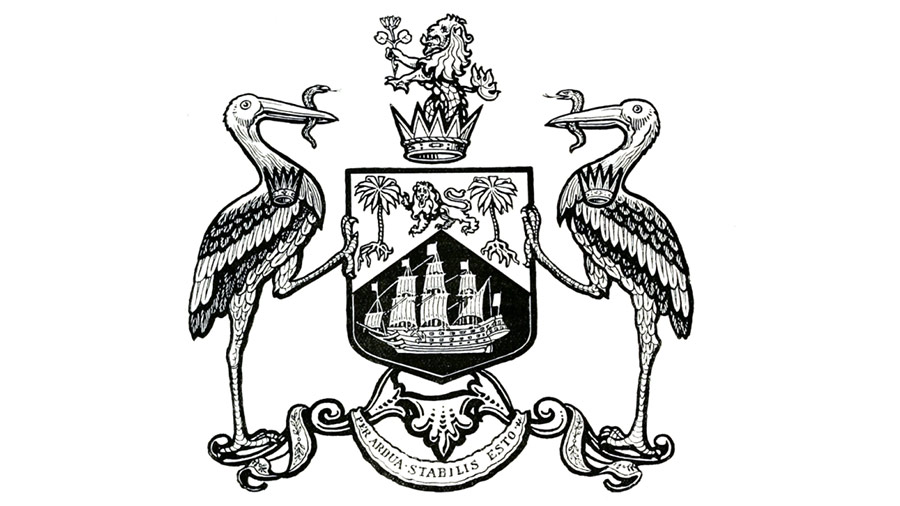
The coat of arms with two storks facing each other — holding a snake in their mouths with the royal crown placed in between Wikimedia Commons
Till the early years of the 20th century, adjutant storks remained common in Calcutta. However, rapid loss of wetlands, which was the natural habitat of these giants, led to the population almost getting decimated. Today, probably, the only place where you will still find the adjutant stork is on the top of the entrance to the western section of Sir Stuart Hogg Market, where the old coat of arms can be found even today — keeping a watch on this city that was once theirs as well.
